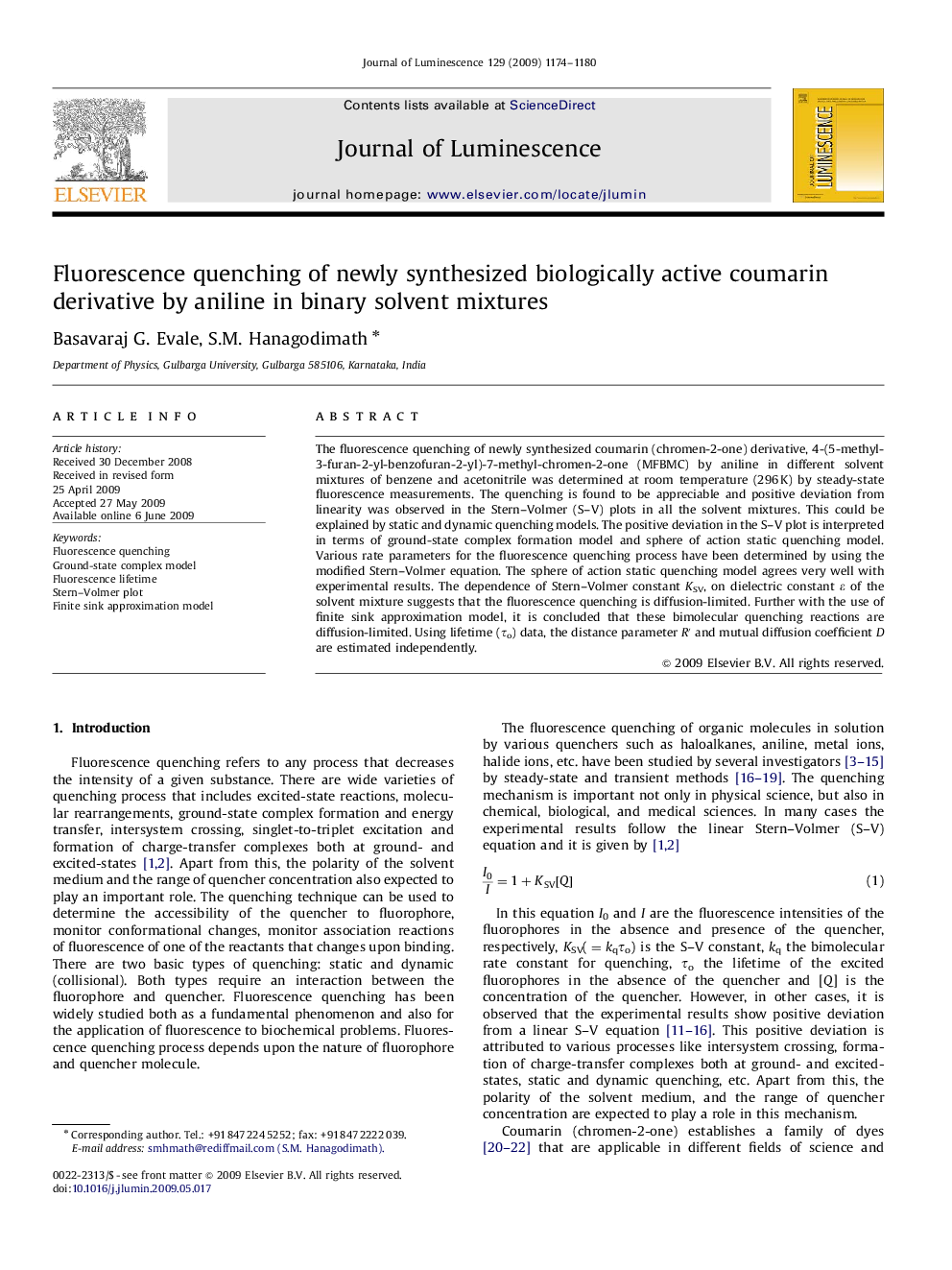| Article ID | Journal | Published Year | Pages | File Type |
|---|---|---|---|---|
| 5402966 | Journal of Luminescence | 2009 | 7 Pages |
Abstract
The fluorescence quenching of newly synthesized coumarin (chromen-2-one) derivative, 4-(5-methyl-3-furan-2-yl-benzofuran-2-yl)-7-methyl-chromen-2-one (MFBMC) by aniline in different solvent mixtures of benzene and acetonitrile was determined at room temperature (296 K) by steady-state fluorescence measurements. The quenching is found to be appreciable and positive deviation from linearity was observed in the Stern-Volmer (S-V) plots in all the solvent mixtures. This could be explained by static and dynamic quenching models. The positive deviation in the S-V plot is interpreted in terms of ground-state complex formation model and sphere of action static quenching model. Various rate parameters for the fluorescence quenching process have been determined by using the modified Stern-Volmer equation. The sphere of action static quenching model agrees very well with experimental results. The dependence of Stern-Volmer constant KSV, on dielectric constant ε of the solvent mixture suggests that the fluorescence quenching is diffusion-limited. Further with the use of finite sink approximation model, it is concluded that these bimolecular quenching reactions are diffusion-limited. Using lifetime (Ïo) data, the distance parameter Râ² and mutual diffusion coefficient D are estimated independently.
Keywords
Related Topics
Physical Sciences and Engineering
Chemistry
Physical and Theoretical Chemistry
Authors
Basavaraj G. Evale, S.M. Hanagodimath,
